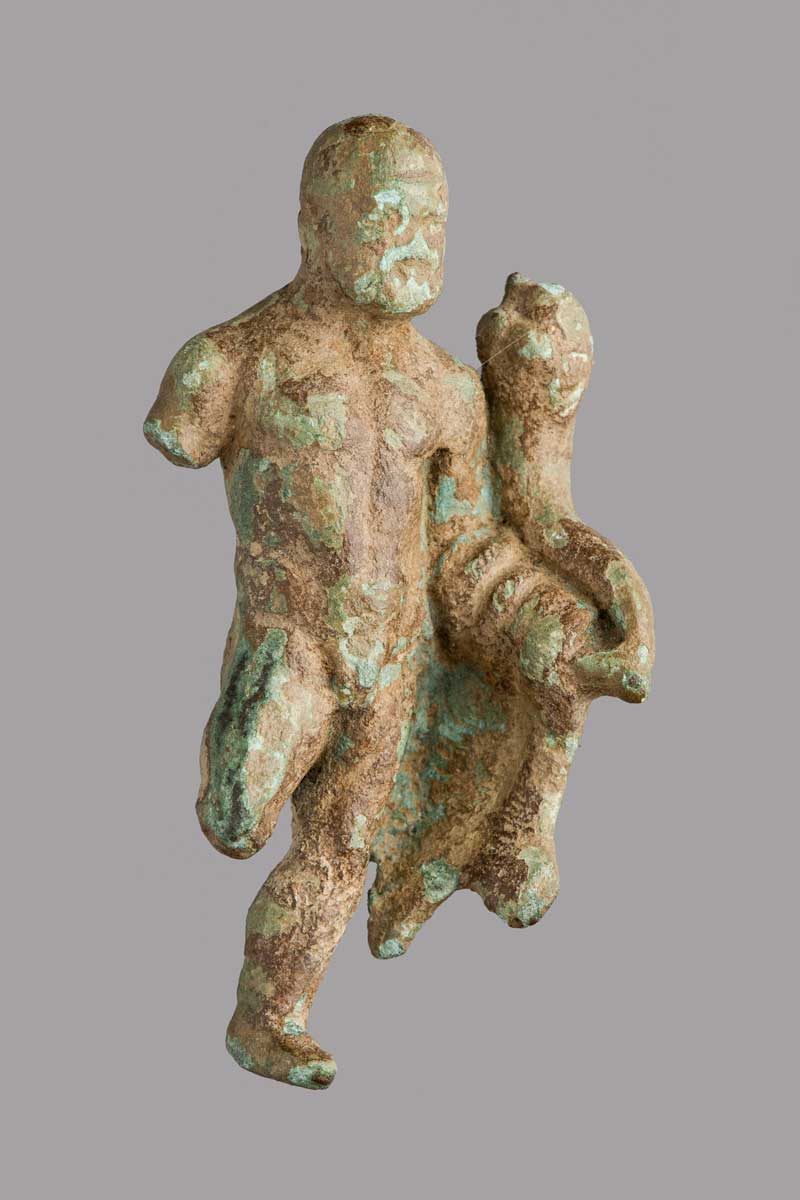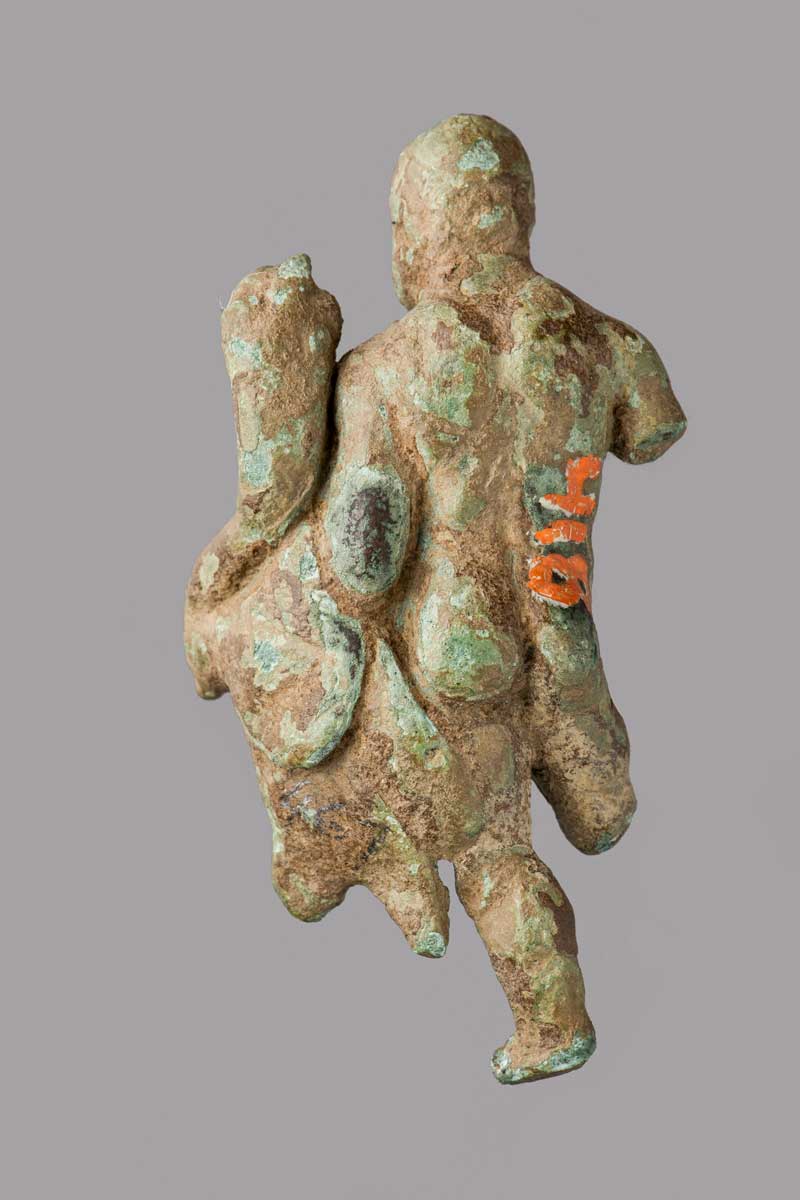The Roman House at Hopkins | Household Gods
Hercules with Cornucopia and Cloak
By Laura Hutchison


Accession Number: JHAM 418
Measurements: Width: 4cm, Height: 7.8cm
Material: Copper alloy
Culture/Date: Roman, 1st-2nd c. CE
Provenance: Unknown
Measurements: Width: 4cm, Height: 7.8cm
Material: Copper alloy
Culture/Date: Roman, 1st-2nd c. CE
Provenance: Unknown
The thick beard and heavy musculature of this Hercules statuette allude to his mature age. The figure carries a cornucopia, an ancient symbol of bounty, in the crux of his left arm. Deities found in lararia, such as Hercules, Isis-Tyche, Ceres, and Harpokrates, are often shown carrying a cornucopia—a sign of their role as guarantors of a family’s prosperity. During the Roman Imperial period, Hercules was celebrated both as one of the mythical founders of Rome and as a guardian of households, shops and civic spaces.